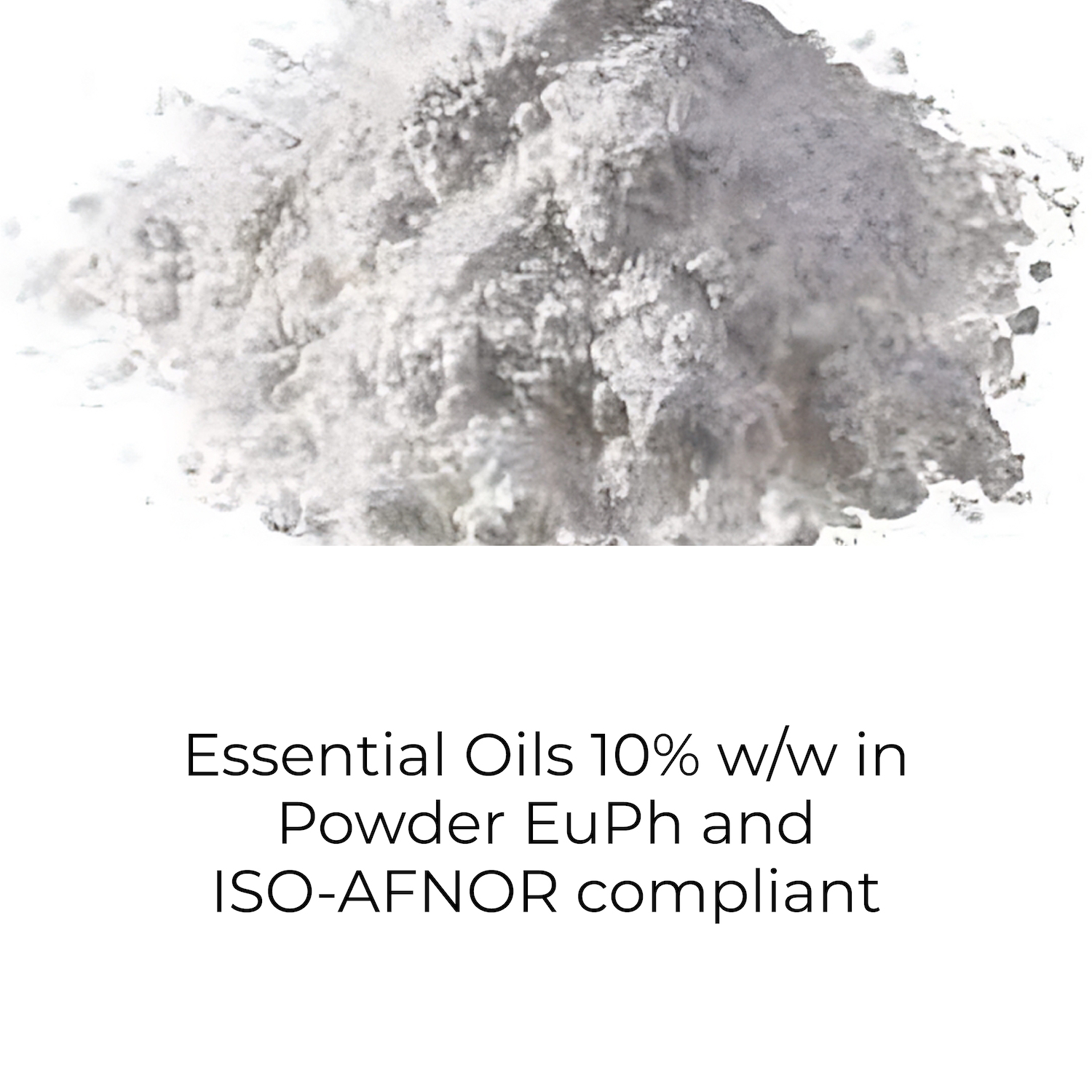Essential Oils 10% w/w in Powder EuPh and ISO-AFNOR compliant
Calliero SpA has been producing and marketing high quality Essential Oils for years, compliant with Pharmacopoeia and ISO-AFNOR.
Using internally developed technology, Essential Oils in Powder are produced with concentrations equal to 10% w/w which can be used in tablets, capsules and buccal sachets, as well as for cosmeceutical applications.
WHAT ARE ESSENTIAL OILS?
Essential oils are volatile, natural, complex compounds produced by aromatic plants and obtained by hydrodistillation. In nature, essential oils play an important role in plant protection as antibacterial, antiviral, antifungal, insecticide and also against herbivores by reducing their appetite. They can also attract some insects to favor the dispersal of pollen and seeds, or act as allelopathic compounds towards other plants. The increasing use of plants by the pharmaceutical industry makes the study of essential oils crucial to design new bioactive delivery systems (Baptista-Silva et al., 2020).
In eukaryotic cells, essential oils can cause the depolarization of the mitochondrial membranes by decreasing the membrane potential; they act on the homeostasis of calcium and other ions with effects on the proton pump and on the production of ATP. They alter the fluidity of membranes, making them more permeable, with a significant effect on microorganisms (Bakkali et al., 2008).
PROPERTIES OF ESSENTIAL OILS
Essential oils have a wide range of pharmaceutical applications and numerous in vitro and in vivo studies have confirmed their antioxidant, antimicrobial, antifungal, antiparasitic, anti-inflammatory, antinociceptive, antispasmodic properties.
Antibiotic and Antiviral Properties: many essential oils have developmental applications as antifungal agents. For example, drug-sensitive and drug-resistant pathogenic yeasts, including the major human pathogen Candida albicans (Potente et al., 2020), or respiratory mycoses (Zuzarte and Salgueiro, 2022) are inhibited by essential oils (Williams et al., 2007). The antibacterial (Kong et al., 2022, Hou et al., 2022) and antiviral (Dhifi et al., 2016, Oriola;Oyedeji, 2022) efficacy of essential oils is another important feature (Raut;Karuppayil, 2014 ). In vitro and in vivo experimental data also show a high therapeutic potential of essential oils for the treatment of infections caused by Trypanosoma species (Morais et al., 2020).
Food Preservation: due to their strong antibacterial properties, essential oils are particularly useful for food preservation, representing real potential for the food industry. A number of essential oils have the potential to be used as food preservatives for meat and meat products, vegetables and fruits, as well as for dairy products, suggesting their uses as natural, environmentally friendly, safe and readily biodegradable agents for food preservation (Falleh et al., 2020).
Treatment of intestinal dysbiosis: dysbiosis is associated with a number of gastrointestinal and systemic disorders. Essential oils exhibit a high degree of selectivity, inhibiting the growth of potential pathogens at concentrations that have no effect on beneficial bacteria in the gut (Hawrelak et al., 2009).
Dermatological properties: skin diseases represent today an important therapeutic, psychological and social problem. To address this issue, attention was paid to essential oils and their terpene components with potent antimicrobial, anti-inflammatory, and antioxidant properties. Research shows that some essential oils effectively reduce inflammatory acne lesions through mechanisms related to sebaceous glands, Cutibacterium acnes colonization, and reactive oxygen species (ROS) (Nurzyńska-Wierdak et al., 2023). A vast literature is present on essential oils tested in dermo-cosmetic formulations and whose biological activities have been evaluated through in vitro and/or in vivo tests (Cunha et al., 2022).
Antispasmodic properties: the antispasmodic effect of essential oils has been studied in several clinical studies for different situations: functional dyspepsia, irritable bowel syndrome, discomfort produced by endoscopic procedures, infantile colic or dysmenorrhea (Heghes et al., 2019).
Action on the nervous system: in recent years, numerous scientific studies have been conducted to investigate the effect and mechanisms of action of essential oils on the central nervous system, with particular reference to pain, anxiety (Setzer 2009), learning, memory, attention, arousal, relaxation, sedation and sleep. Some essential oils show developmental benefits, with the potential to induce neurite outgrowth and neurotransmitter receptor levels in physiological and pathophysiological studies (Sattayakhom et al. 2023). In addition, effects on mental health (Lizarraga-Valderrama 2021), mood, behavior and perception have been demonstrated, as well as the application of essential oils in the treatment of epilepsy, stress, dementia and Alzheimer’s disease (Dobetsberger and Buchbauer 2011).
Herbicidal and insecticidal properties: essential oils find an important use in agriculture. Numerous studies have demonstrated the biological activity of essential oils against weeds, as larvicides (Pavela 2015), against phytopathogenic fungi, oomycetes and bacteria, with innovative methods, potentially valuable for more sustainable agriculture, with the aim of encouraging the use of alternative products to replace synthetic pesticides to control weeds and plant diseases, without significantly impacting yields (Raveau et al. 2020).
LIST OF ESSENTIAL OILS AVAILABLE ON SOLID SUPPORT AT 10% CONCENTRATION
| Latin name | Common name | Main Bioactive Molecules | ISO or AFNOR | Properties | |
|---|---|---|---|---|---|
 | Chamomilla recutita | Chamomile | trans-beta-Farnesene Alpha bisabolol and its oxides | 75-363 | The essential oil is used for the treatment of mild skin irritation and to treat anxiety and spasm as a as well as anti-inflammatory, antioxidant, analgesic (Aremu et al. 2018), sedative, antimicrobial, hepatoprotective, anti-allergic and anti-hypertensive agent (Sah et al. 2022). The essential oil also has a remarkable smooth muscle relaxant effect and find applications in spasmodic gastrointestinal disorders (Sándor et al. 2018). |
 | Citrus limon | Lemon | Limonene Beta-pinene | 75-335 | Protects from oxidative stress by reducing the lipid peroxidation level and nitrite content (Lopes Campêlo et al. 2011). The essential oil has also anticonvulsant activities (Campêlo et al. 2011) and possess a modulatory role in the treatment of neurodegenerative diseases (Rice-Evans et al. 1997) by anxiolytic activities (Buchbauer et al. 1993) due to modulation by the benzodiazepine binding site of the GABAA receptor (Viana et al. 2020). Lemon essential oils has been used to control some fungal diseases of grapevine wood (Ammad et al. 2018). |
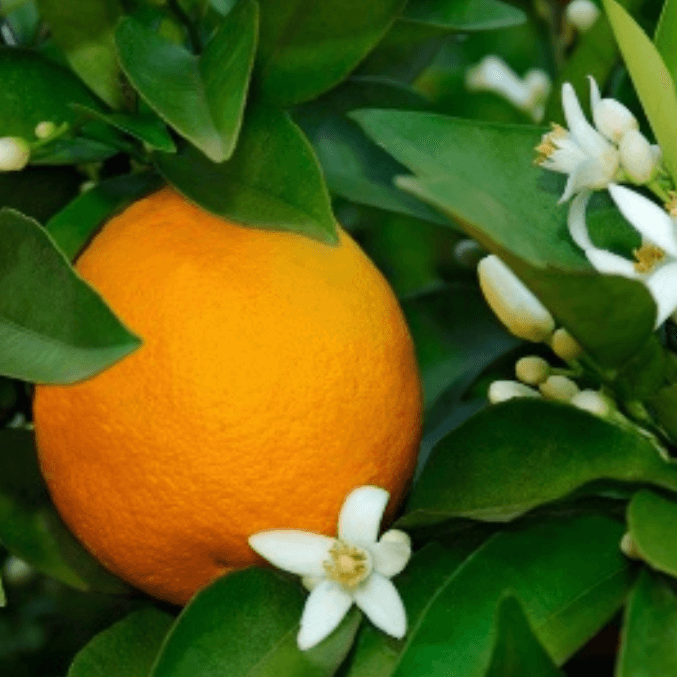 | Citrus sinensis | Sweet orange | Limonene | 75-203 | The orange essential oil has an anxiolytic effect (Carvalho-Freitas and Costa 2002) and sweet orange has an acute anxiolytic activity, giving some scientific support to its use as a tranquilizer by aromatherapists (Faturi et al. 2010). |
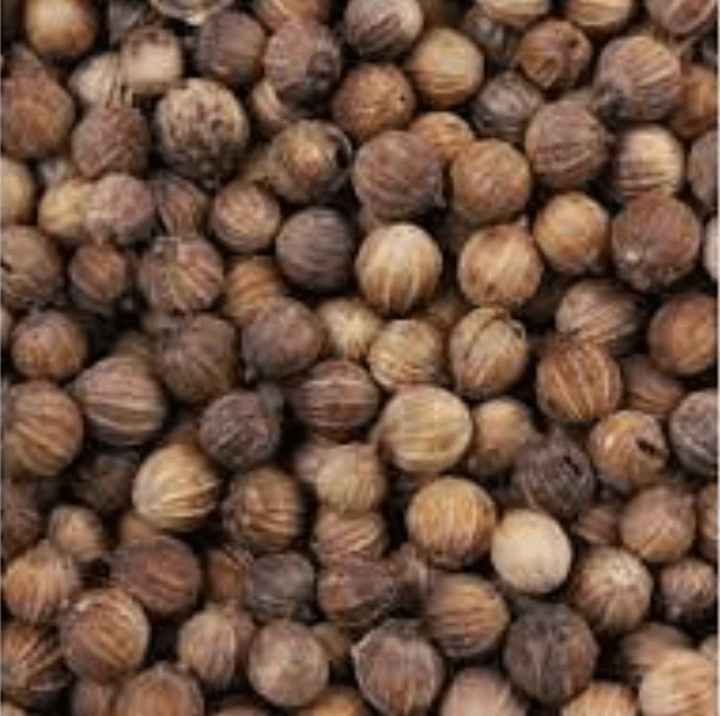 | Coriandrum sativum | Coriander | Linalool | 75-205 | Coriander essential oil is recommended for treatment of anxiety, insomnia or for relief of nervousness (Mandal and Mandal 2015) and shows sedative-hypnotic and antioxidant activities (Emam and Heydari 2006). The essential oil of coriander has anxiolytic effect and may have potential sedative and muscle relaxant effects (Emamghoreishi et al. 2005). Coriander essential oil is one of the most promising alternatives in the food and pharmaceutical industries (Al-Khayri et al. 2023). |
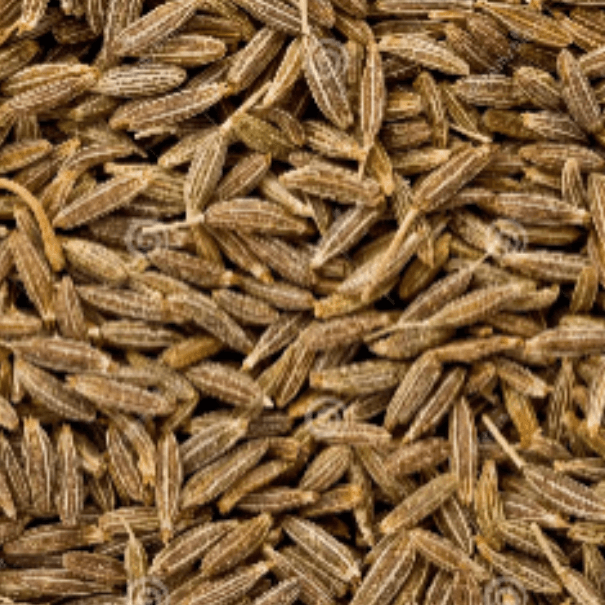 | Cuminum cyminum | Cumin | Beta-pinene Gamma terpinene Cumin aldehyde | 75-346 | Cumin also has wide usage in the beverage, food, liquor, medicine, perfume, and toiletry industries. It is traditionally used as an astringent, carminative, coagulant and stimulant, as well as remedy against diarrhea, dyspepsia, epilepsy, toothache, whooping cough, flatulence, indigestion, and jaundice (Allaq et al. 2020; Nirmala et al. 2020). |
 | Eucalyptus globulus | Eucalypt | 1,8-cineole (eucalyptol) Alpha-pinene | 75-225 | The essential oil of Eucalypt is know for its balsamic properties due to the presence of the monoterpene 1,8-cineol (eucalyptol). The oils shows antibacterial, antibiofilm, antioxidant, (Čmiková et al. 2023) and insecticidal properties (Yahia et al. 2023). Anti-inflammatory, antipyretic, and analgesic properties of E. globulus essential oil have been reported (Alyas et al. 2023). Recently, the essential oils was found to target proteins related to the SARS-CoV-2 entry and replication (Iqhrammullah et al. 2023). |
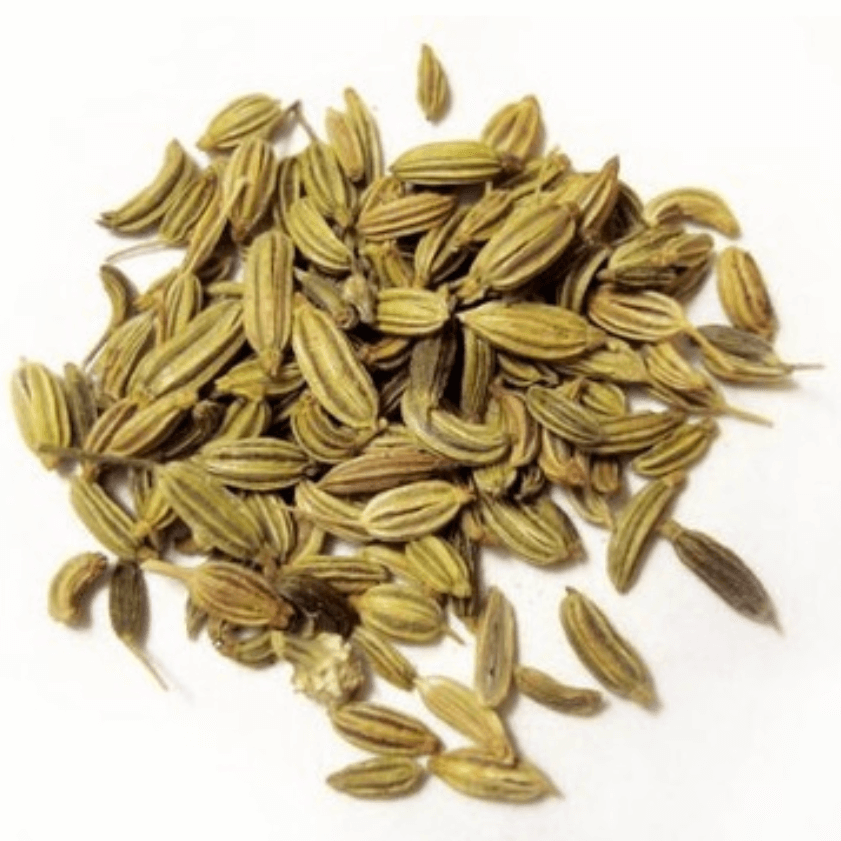 | Foeniculum vulgare | Sweet fennel | Trans-anethole | 75-257 | The essential oil shows an ability to inhibit 5-lipoxygenase (Miguel et al. 2010) and its main component anethole shows a safe antithrombotic activity that is due to its broad spectrum antiplatelet activity, clot destabilizing effect and vasorelaxant action (Tognolini et al. 2007). The essential oil has also a potent hepatoprotective action (Özbek et al. 2004) and has a potential role for the natural treatment of IBS (Di Ciaula et al. 2018). |
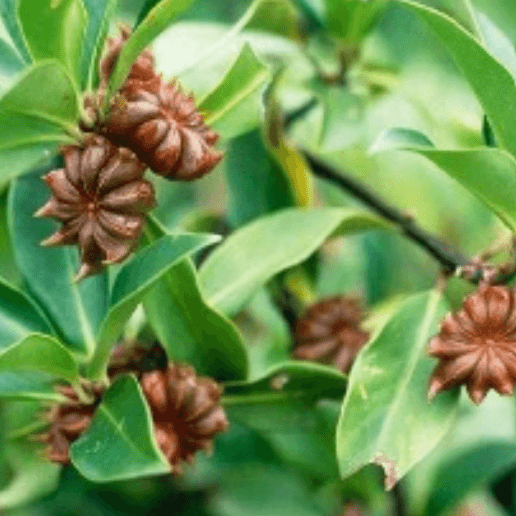 | Illicium verum | Star anise | trans-Anethole | 75-252 | Illicium verum, as a traditional herbal medicine, belongs to the Magnoliopsida family, which possesses effective antimicrobial, antioxidant, insecticidal (Ibrahim et al. 2017; Park et al. 2016), analgesic and sedative activities (Wang et al. 2011). It also shows a strong antioxidant activity (Wu et al. 2022). |
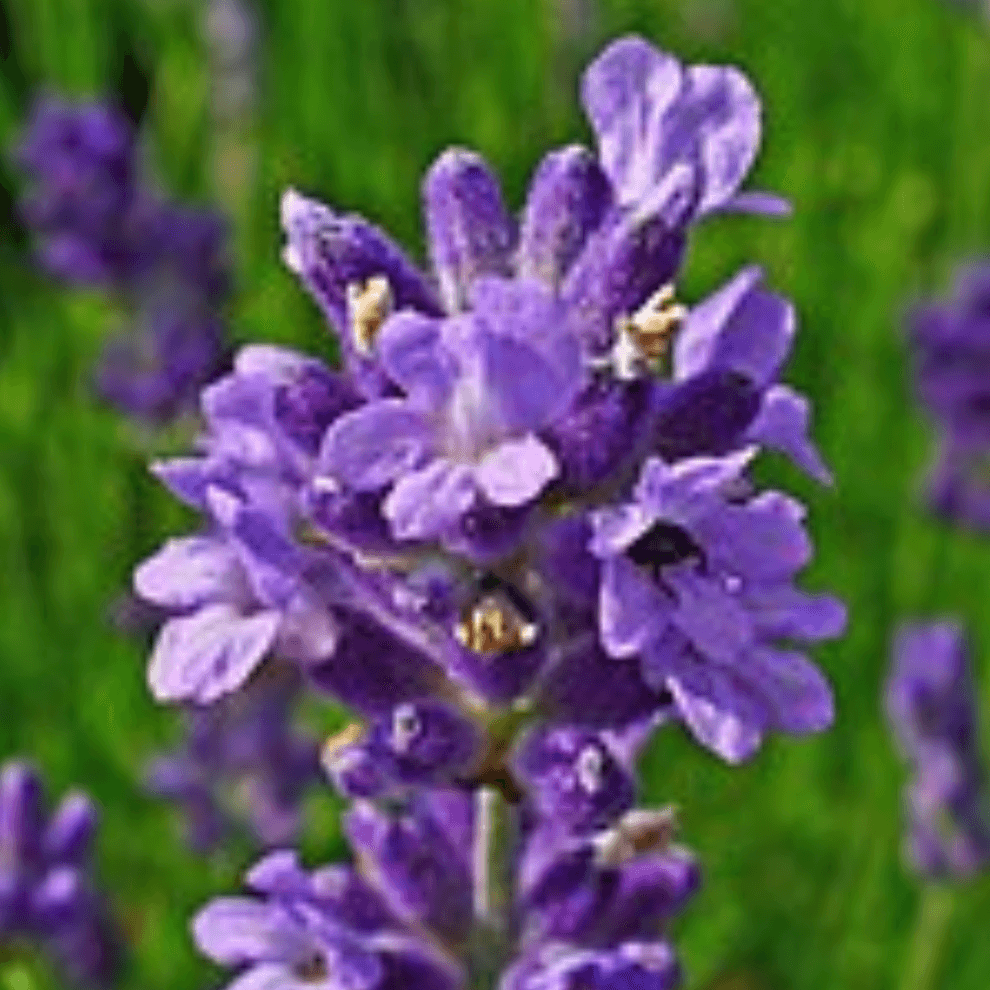 | Lavandula angustifolia | Lavender | Linalool Linalyl acetate | 75-301 | The essential oil shows anti-agitation properties in humans, indicating an action in the central nervous system (Huang et al. 2008). The lavender essential oil also shows local anaesthetic activity (Ghelardini et al. 1999) and exerts antifungal and antioxidant effects (Caprari et al. 2021). The most important application, besides cosmetics and perfumery, relies on the ability of the lavender essential oil is for relief of convulsion, anxiety and insomnia and in treatment of several neurological disorders, with particular reference to the well known effect of linalool on glutamatergic system (Elisabetsky et al. 1995; López et al. 2017). Moreover, linalool interacts with NMDA receptor complex (Souto-Maior et al. 2011) and shows an inhibitory effect on acetylcholine release and channel open time in the mouse neuromuscular junction (Re et al. 2000). The inhalation of linalool provokes relaxing effects, and inhibits adenylyl cyclase activity by affecting the cAMP cellular content (Sampaio et al. 2012). Particularly, lavender oil has enhanced overall sleep pattern, quality and sleep efficiency (dos Reis Lucena et al. 2021). |
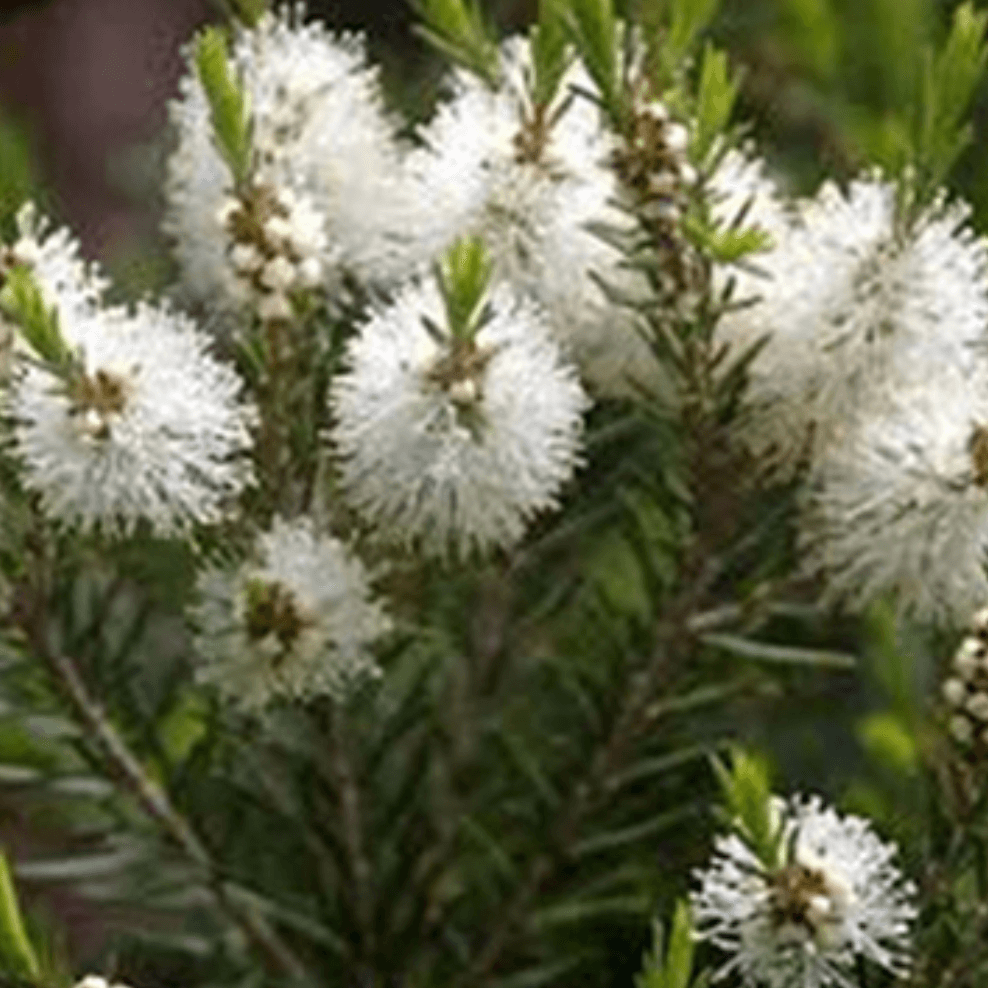 | Melaleuca alternifolia | Tea Tree oil | Gamma terpinene Alpha terpineol | 75-358 | Tea Tree oil has antimicrobial activity against Gram-positive, Gram-negative bacteria and against yeasts (Borotová et al. 2022) and Herpes virus (Brun et al. 2019). Tea Tree oil also demonstrates tissue-remodeling and metabolism modulating activities in human skin cells (Han and Parker 2017) |
 | Melissa officinalis | Lemon balm | Geraniolo Germacrene D | The essential oil has antioxidant (Meftahizade et al. 2010) and antimicrobial activity (Petrisor et al. 2022) and possess an antidepressant-like activity similar to imipramine which may have a potential clinical value for treatment of depression (Emamghoreishi and Talebianpour 2015). The essential oil also shows antinociceptive and antihyperglycemic effects (Hasanein and Riahi 2014) and finds applications in the management of mild to moderate Alzheimer’s, against migraine and rheumatism (Moradkhani et al. 2010). | |
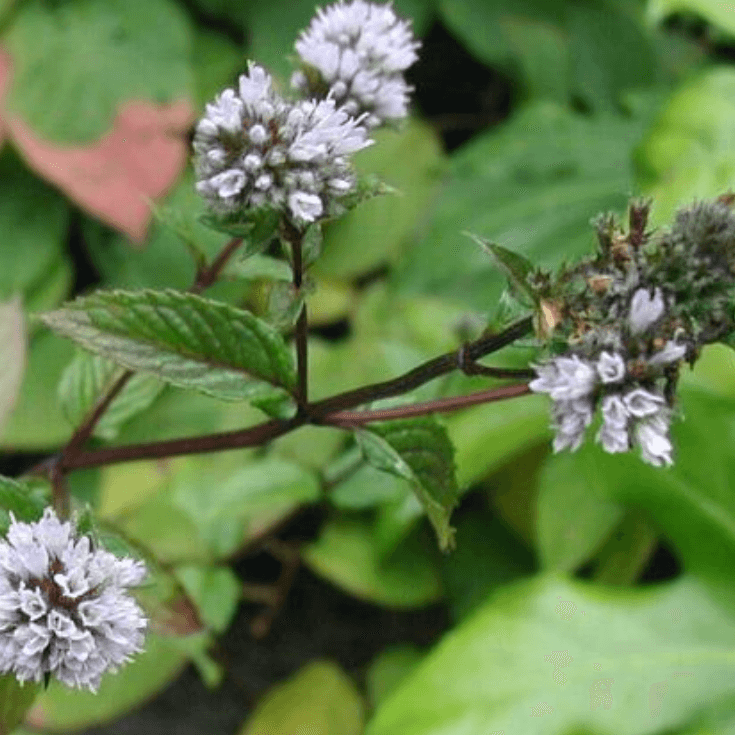 | Mentha piperita | Peppermin | Menthol Menthone | 75-210 | Peppermint oil is the major constituent of several over-the-counter remedies for symptoms of Irritable Bowel Syndrome (IBS) (Pittler and Ernst 1998). This effect in mainly due to menthol, which is also used to treat various gastrointestinal disorders, such as nausea and vomiting, and shows anaesthetic and sedative effects (Can and Sümer 2019) as well as and spasmolytic effects in human colon circular muscle by inhibiting directly the gastrointestinal smooth muscle contractility, through the block of Ca2+ influx through sarcolemma L-type Ca2+ channels (Amato et al. 2014). Peppermint oil has significant antimicrobial and antiviral activities, strong antioxidant actions, and some antiallergenic potential (Arakawa and Osawa 2000). Animal model studies demonstrate a relaxation effect on gastrointestinal tissue, analgesic effects in the central and peripheral nervous system, immunomodulating actions and chemopreventive potential (McKay and Blumberg 2006). The essential oil has also antifungal and antibacterial properties (Soković et al. 2006; İşcan et al. 2002), gives relief from respiratory problems, has wound healing activity and is good for breastfeeding (Wani et al. 2022). |
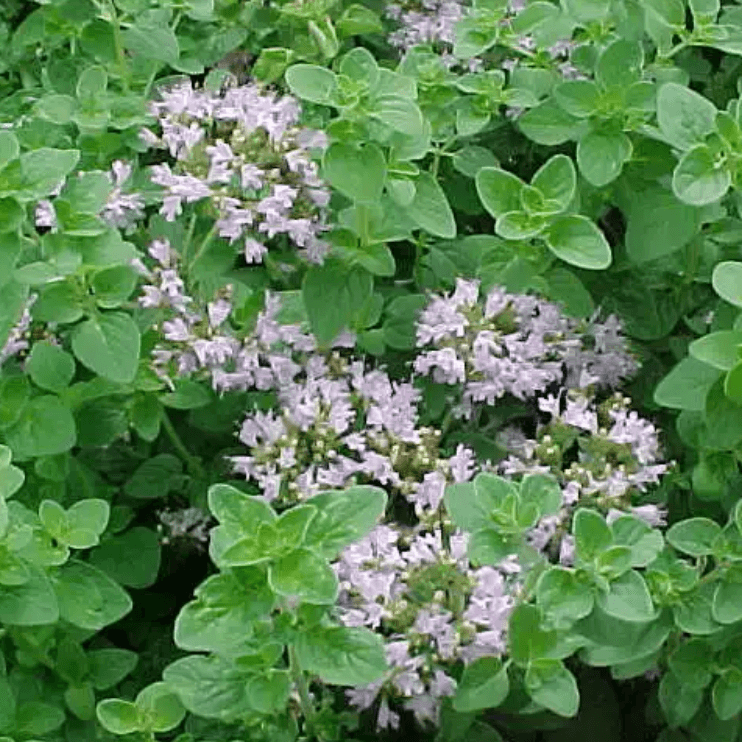 | Origanum vulgare | Oregano | Carvacrol | 75-368 | Several clinical trials have been done with the essential oil of oregano, including treatment of acute tracheitis and laryngitis, acute rhino-sinusitis, and acute pharyngo-tonsillitis (Pezzani et al. 2017). The essential oil has gained attention in the dermatological field due to its cosmeceutical potential (Bora et al. 2022) and to its strong antimicrobial activity compared with antibiotics (Özkalp et al. 2010). Oregano essential oils finds also applications for hypertension, cold, insomnia, toothache, headache and epilepsy (Sharifi‐Rad et al. 2021). The main component, carvacrol, also restored liver function, insulin level and plasma glucose level (Imran et al. 2022). |
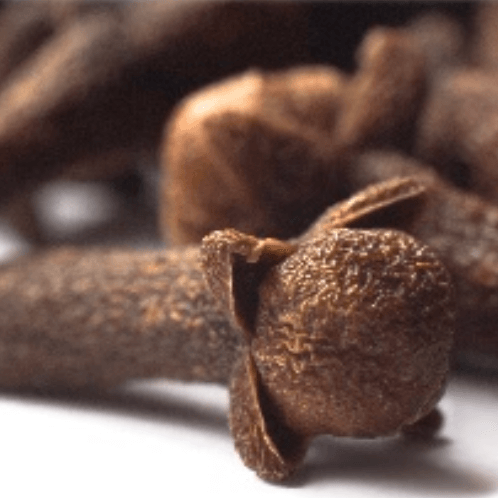 | Syzygium aromaticum | Cloves | Beta caryophyllene | 75-207 | For properties of cloves see CalBCP-SA. |
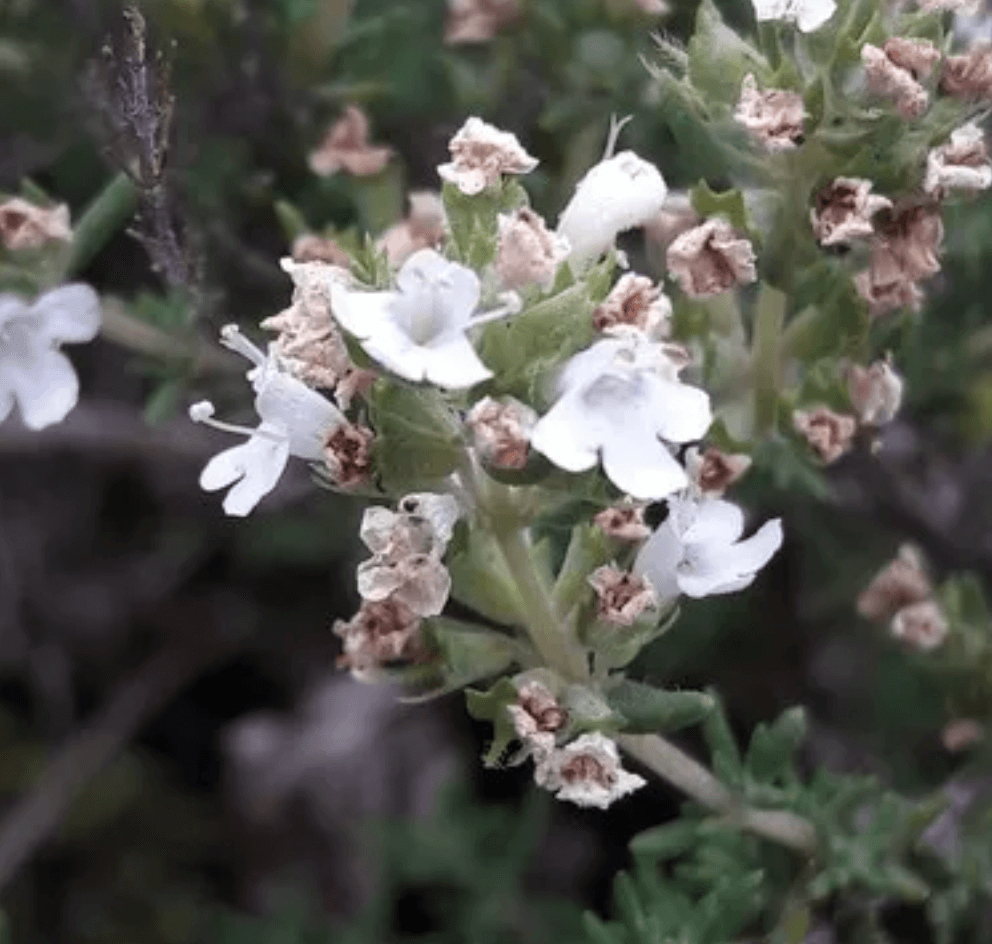 | Thymus zygis | Spanish thyme | Thymol | 75-349 | Both thymol and thyme essential oil have long been used in traditional medicine as expectorant, anti-inflammatory, antiviral, antibacterial, and antiseptic agents, mainly in the treatment of the upper respiratory system (Kowalczyk et al. 2020). Thymol activity is also reported against oral diseases such as caries (Preston et al. 2007) and has cicatrizing (Mollarafie et al. 2015) and antioxidant (Nikolić et al. 2014; Youdim et al. 2002) activities with a notable activity against CC14-induced hepatotoxicity combined with a marked scavenger activity (Jimenez et al. 1993). Thymol also shows a potential as a source of a new sustainable nematicidal products, being able to reduced the number of nematode females as well as inhibiting egg differentiation (Nasiou and Giannakou 2023). |
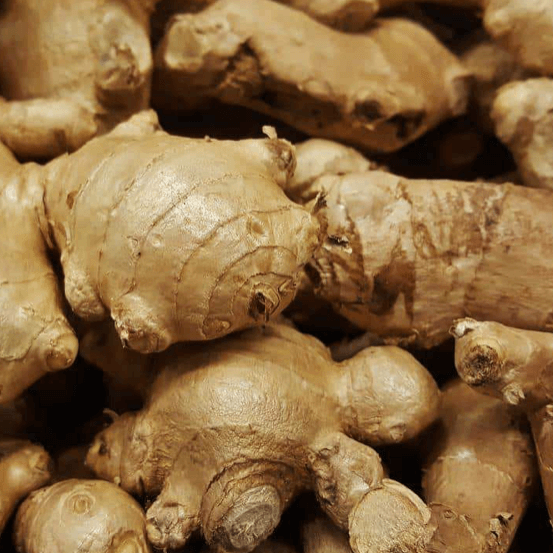 | Zingiber officinale | Ginger | Zingerone Zingiberene Gingerols Shogoals | Ginger essential oil has been found to possess biological activities, such as antioxidant (Nile and Park 2015), anti-inflammatory for bowel disease (Zhang et al. 2016) and antimicrobial (Vijendra Kumar et al. 2014) and is used to attenuate and treat several common diseases, such as headaches, colds, nausea, and emesis (Mao et al. 2019). The essential oil is also known for its antiulcer, anti-hypertensive, anti-gastrointestinal and analgesic activities (Rasool et al. 2022). Ginger oil find also application for flavor enhancement and is a natural preservative that improves the organoleptic properties and creates the visual appeal of food. Moreover, il facilitates the bioavailability of nutrients and imparts aroma and flavor to foods (Laelago Ersedo et al. 2023). |
Al-Khayri JM, Banadka A, Nandhini M, Nagella P, Al-Mssallem MQ, Alessa FM (2023) Essential Oil from Coriandrum sativum: A review on Its Phytochemistry and Biological Activity. Molecules 28 (2):696
Allaq AA, Sidik NJ, Abdul-Aziz A, Ahmed IA (2020) Cumin (Cuminum cyminum L.): A review of its ethnopharmacology, phytochemistry. Biomedical Research and Therapy 7 (9):4016-4021
Alyas S, Yasin I, Shafique T, Zahid B, Hayat S, Shahbaz M, Aman F, Zahid A, Ilyas A, Ahmad S (2023) Anti-inflammatory, antipyretic and analgesic activities of eucalyptus globulus essential oil in albino rats. Biological and Clinical Sciences Research Journal 2023 (1):207-207
Amato A, Liotta R, Mulè F (2014) Effects of menthol on circular smooth muscle of human colon: Analysis of the mechanism of action. European Journal of Pharmacology 740:295-301. doi:https://doi.org/10.1016/j.ejphar.2014.07.018
Ammad F, Moumen O, Gasem A, Othmane S, Hisashi K-N, Zebib B, Merah O (2018) The potency of lemon (Citrus limon L.) essential oil to control some fungal diseases of grapevine wood. Comptes Rendus Biologies 341 (2):97-101. doi:https://doi.org/10.1016/j.crvi.2018.01.003
Arakawa T, Osawa K (2000) Pharmacological study and application to food of mint flavour-antibacterial and antiallergic principles. Aroma Research 1 (1):20-23
Aremu OO, Tata CM, Sewani-Rusike CR, Oyedeji AO, Oyedeji OO, Nkeh-Chungag BN (2018) Phytochemical composition, and analgesic and antiinflammatory properties of essential oil of Chamaemelum nobile (Asteraceae L All) in rodents. Tropical Journal of Pharmaceutical Research 17 (10):1939-1945
Bakkali F, Averbeck S, Averbeck D, Idaomar M (2008) Biological effects of essential oils – A review. Food and Chemical Toxicology 46 (2):446-475. doi:https://doi.org/10.1016/j.fct.2007.09.106
Baptista-Silva S, Borges S, Ramos OL, Pintado M, Sarmento B (2020) The progress of essential oils as potential therapeutic agents: a review. Journal of Essential Oil Research 32 (4):279-295. doi:10.1080/10412905.2020.1746698
Bora L, Avram S, Pavel IZ, Muntean D, Liga S, Buda V, Gurgus D, Danciu C (2022) An up-to-date review regarding cutaneous benefits of Origanum vulgare L. essential oil. Antibiotics 11 (5):549
Borotová P, Galovičová L, Vukovic NL, Vukic M, Tvrdá E, Kačániová M (2022) Chemical and biological characterization of Melaleuca alternifolia essential oil. Plants 11 (4):558
Brun P, Bernabè G, Filippini R, Piovan A (2019) In vitro antimicrobial activities of commercially available tea tree (Melaleuca alternifolia) essential oils. Current microbiology 76:108-116
Buchbauer G, Jirovetz L, Jäger W, Plank C, Dietrich H (1993) Fragrance compounds and essential oils with sedative effects upon inhalation. Journal of pharmaceutical sciences 82 (6):660-664. doi:10.1002/jps.2600820623
Campêlo LML, Lima SGd, Feitosa CM, Freitas RMd (2011) Evaluation of central nervous system effects of Citrus limon essential oil in mice. Revista Brasileira de Farmacognosia 21:668-673
Can E, Sümer E (2019) Anesthetic and sedative efficacy of peppermint (Mentha piperita) and lavender (Lavandula angustifolia) essential oils in blue dolphin cichlid (Cyrtocara moorii). Turkish Journal of Veterinary & Animal Sciences 43 (3):334-341
Caprari C, Fantasma F, Divino F, Bucci A, Iorizzi M, Naclerio G, Ranalli G, Saviano G (2021) Chemical Profile, In Vitro Biological Activity and Comparison of Essential Oils from Fresh and Dried Flowers of Lavandula angustifolia L. Molecules 26 (17):5317
Carvalho-Freitas MI, Costa M (2002) Anxiolytic and sedative effects of extracts and essential oil from Citrus aurantium L. Biological & pharmaceutical bulletin 25 (12):1629-1633. doi:10.1248/bpb.25.1629
Čmiková N, Galovičová L, Schwarzová M, Vukic MD, Vukovic NL, Kowalczewski PŁ, Bakay L, Kluz MI, Puchalski C, Kačániová M (2023) Chemical Composition and Biological Activities of Eucalyptus globulus Essential Oil. Plants 12 (5):1076
Cunha C, Ribeiro HM, Rodrigues M, Araujo ARTS (2022) Essential oils used in dermocosmetics: Review about its biological activities. Journal of Cosmetic Dermatology 21 (2):513-529. doi:https://doi.org/10.1111/jocd.14652
Dhifi W, Bellili S, Jazi S, Bahloul N, Mnif W (2016) Essential Oils’ Chemical Characterization and Investigation of Some Biological Activities: A Critical Review. Medicines 3 (4). doi:10.3390/medicines3040025
Di Ciaula A, Portincasa P, Maes N, Albert A (2018) Efficacy of bio-optimized extracts of turmeric and essential fennel oil on the quality of life in patients with irritable bowel syndrome. Annals of gastroenterology 31 (6):685
Dobetsberger C, Buchbauer G (2011) Actions of essential oils on the central nervous system: An updated review. Flavour and Fragrance Journal 26 (5):300-316. doi:https://doi.org/10.1002/ffj.2045
dos Reis Lucena L, dos Santos-Junior JG, Tufik S, Hachul H (2021) Lavender essential oil on postmenopausal women with insomnia: Double-blind randomized trial. Complementary Therapies in Medicine 59:102726. doi:https://doi.org/10.1016/j.ctim.2021.102726
Elisabetsky E, Marschner J, Onofre Souza D (1995) Effects of linalool on glutamatergic system in the rat cerebral cortex. Neurochemical Research 20 (4):461-465. doi:10.1007/BF00973103
Emam GM, Heydari HG (2006) Sedative-hypnotic activity of extracts and essential oil of coriander seeds.
Emamghoreishi M, Khasaki M, Aazam MF (2005) Coriandrum sativum: evaluation of its anxiolytic effect in the elevated plus-maze. Journal of Ethnopharmacology 96 (3):365-370. doi:https://doi.org/10.1016/j.jep.2004.06.022
Emamghoreishi M, Talebianpour M (2015) Antidepressant effect of Melissa officinalis in the forced swimming test. DARU Journal of Pharmaceutical Sciences 17 (1):42-47
Falleh H, Ben Jemaa M, Saada M, Ksouri R (2020) Essential oils: A promising eco-friendly food preservative. Food Chemistry 330:127268. doi:https://doi.org/10.1016/j.foodchem.2020.127268
Faturi CB, Leite JR, Alves PB, Canton AC, Teixeira-Silva F (2010) Anxiolytic-like effect of sweet orange aroma in Wistar rats. Progress in Neuro-Psychopharmacology and Biological Psychiatry 34 (4):605-609. doi:https://doi.org/10.1016/j.pnpbp.2010.02.020
Ghelardini C, Galeotti N, Salvatore G, Mazzanti G (1999) Local anaesthetic activity of the essential oil of Lavandula angustifolia. Planta medica 65 (08):700-703
Han X, Parker TL (2017) Melaleuca (Melaleuca alternifolia) essential oil demonstrates tissue-remodeling and metabolism-modulating activities in human skin cells. Cogent Biology 3 (1):1318476
Hasanein P, Riahi H (2014) Antinociceptive and Antihyperglycemic Effects of Melissa officinalis Essential Oil in an Experimental Model of Diabetes. Medical Principles and Practice 24 (1):47-52. doi:10.1159/000368755
Hawrelak JA, Cattley T, Myers SP (2009) Essential oils in the treatment of intestinal dysbiosis: A preliminary in vitro study. Alternative medicine review : a journal of clinical therapeutic 14 (4):380-384
Heghes SC, Vostinaru O, Rus LM, Mogosan C, Iuga CA, Filip L (2019) Antispasmodic Effect of Essential Oils and Their Constituents: A Review. Molecules 24 (9):1675
Hou T, Sana SS, Li H, Xing Y, Nanda A, Netala VR, Zhang Z (2022) Essential oils and its antibacterial, antifungal and anti-oxidant activity applications: A review. Food Bioscience 47:101716. doi:https://doi.org/10.1016/j.fbio.2022.101716
Huang L, Abuhamdah S, Howes M-JR, Dixon CL, Elliot MS, Ballard C, Holmes C, Burns A, Perry EK, Francis PT (2008) Pharmacological profile of essential oils derived from Lavandula angustifolia and Melissa officinalis with anti-agitation properties: focus on ligand-gated channels. Journal of Pharmacy and Pharmacology 60 (11):1515-1522
Ibrahim MK, Mattar ZA, Abdel-Khalek HH, Azzam YM (2017) Evaluation of antibacterial efficacy of anise wastes against some multidrug resistant bacterial isolates. Journal of Radiation Research and Applied Sciences 10 (1):34-43. doi:https://doi.org/10.1016/j.jrras.2016.11.002
Imran M, Aslam M, Alsagaby SA, Saeed F, Ahmad I, Afzaal M, Arshad MU, Abdelgawad MA, El‐Ghorab AH, Khames A (2022) Therapeutic application of carvacrol: A comprehensive review. Food Science & Nutrition 10 (11):3544-3561
Iqhrammullah M, Rizki DR, Purnama A, Duta TF, Harapan H, Idroes R, Ginting B (2023) Antiviral molecular targets of essential oils against SARS-CoV-2: A systematic review. Scientia Pharmaceutica 91 (1):15
İşcan G, Ki̇ri̇mer N, Kürkcüoǧlu Mn, Başer HC, Demirci F (2002) Antimicrobial screening of Mentha piperita essential oils. Journal of agricultural and food chemistry 50 (14):3943-3946
Jimenez J, Navarro M, Montilla M, Martin A, Martinez A (1993) Thymus zygis Oil: its effects on CCI4-induced hepatotoxicity and free radical scavenger activity. Journal of Essential Oil Research 5 (2):153-158
Kong AS-Y, Maran S, Yap PS-X, Lim S-HE, Yang S-K, Cheng W-H, Tan Y-H, Lai K-S (2022) Anti- and Pro-Oxidant Properties of Essential Oils against Antimicrobial Resistance. Antioxidants 11 (9):1819
Kowalczyk A, Przychodna M, Sopata S, Bodalska A, Fecka I (2020) Thymol and Thyme Essential Oil—New Insights into Selected Therapeutic Applications. Molecules 25 (18):4125
Laelago Ersedo T, Teka TA, Fikreyesus Forsido S, Dessalegn E, Adebo JA, Tamiru M, Astatkie T (2023) Food flavor enhancement, preservation, and bio-functionality of ginger (Zingiber officinale): a review. International Journal of Food Properties 26 (1):928-951. doi:10.1080/10942912.2023.2194576
Lizarraga-Valderrama LR (2021) Effects of essential oils on central nervous system: Focus on mental health. Phytotherapy research : PTR 35 (2):657-679. doi:10.1002/ptr.6854
Lopes Campêlo LM, Moura Gonçalves FC, Feitosa CM, de Freitas RM (2011) Antioxidant activity of Citrus limon essential oil in mouse hippocampus. Pharmaceutical Biology 49 (7):709-715. doi:10.3109/13880209.2010.541924
López V, Nielsen B, Solas M, Ramírez MJ, Jäger AK (2017) Exploring Pharmacological Mechanisms of Lavender (Lavandula angustifolia) Essential Oil on Central Nervous System Targets. Frontiers in Pharmacology 8. doi:10.3389/fphar.2017.00280
Mandal S, Mandal M (2015) Coriander (Coriandrum sativum L.) essential oil: Chemistry and biological activity. Asian Pacific Journal of Tropical Biomedicine 5 (6):421-428. doi:https://doi.org/10.1016/j.apjtb.2015.04.001
Mao Q-Q, Xu X-Y, Cao S-Y, Gan R-Y, Corke H, Beta T, Li H-B (2019) Bioactive Compounds and Bioactivities of Ginger (Zingiber officinale Roscoe). Foods 8 (6):185
McKay DL, Blumberg JB (2006) A review of the bioactivity and potential health benefits of peppermint tea (Mentha piperita L.). Phytotherapy Research: An International Journal Devoted to Pharmacological and Toxicological Evaluation of Natural Product Derivatives 20 (8):619-633
Meftahizade H, Sargsyan E, Moradkhani H (2010) Investigation of antioxidant capacity of Melissa officinalis L. essential oils. J Med Plant Res 4 (14):1391-1395
Miguel MG, Cruz C, Faleiro L, Simões MT, Figueiredo AC, Barroso JG, Pedro LG (2010) Foeniculum vulgare essential oils: chemical composition, antioxidant and antimicrobial activities. Natural product communications 5 (2):1934578X1000500231
Mollarafie P, Khadiv Parsi P, Zarghami R, Amini Fazl M, Ghafarzadegan R (2015) Antibacterial and wound healing properties of thymol (Thymus vulgaris Oil) and its application in a novel wound dressing. فصلنامه علمی پژوهشی گیاهان دارویی 14 (53):69-81
Moradkhani H, Sargsyan E, Bibak H, Naseri B, Sadat-Hosseini M, Fayazi-Barjin A, Meftahizade H (2010) Melissa officinalis L., a valuable medicine plant. J Med Plants Res 4:2753-2759
Morais MC, Souza JV, da Silva Maia Bezerra Filho C, Dolabella SS, Sousa DP (2020) Trypanocidal Essential Oils: A Review. Molecules 25 (19). doi:10.3390/molecules25194568
Nasiou E, Giannakou IO (2023) Nematicidal Potential of Thymol against Meloidogyne javanica (Treub) Chitwood. Plants 12 (9):1851
Nikolić M, Glamočlija J, Ferreira ICFR, Calhelha RC, Fernandes Â, Marković T, Marković D, Giweli A, Soković M (2014) Chemical composition, antimicrobial, antioxidant and antitumor activity of Thymus serpyllum L., Thymus algeriensis Boiss. and Reut and Thymus vulgaris L. essential oils. Industrial Crops and Products 52:183-190. doi:https://doi.org/10.1016/j.indcrop.2013.10.006
Nile SH, Park SW (2015) Chromatographic analysis, antioxidant, anti-inflammatory, and xanthine oxidase inhibitory activities of ginger extracts and its reference compounds. Industrial Crops and Products 70:238-244. doi:https://doi.org/10.1016/j.indcrop.2015.03.033
Nirmala MJ, Durai L, Rao KA, Nagarajan R (2020) Ultrasonic nanoemulsification of Cuminum cyminum essential oil and its applications in medicine. International journal of nanomedicine:795-807
Nurzyńska-Wierdak R, Pietrasik D, Walasek-Janusz M (2023) Essential Oils in the Treatment of Various Types of Acne-A Review. Plants 12 (1):90
Oriola AO, Oyedeji AO (2022) Essential Oils and Their Compounds as Potential Anti-Influenza Agents. Molecules 27 (22). doi:10.3390/molecules27227797
Özbek H, Ugras S, Bayram I, Uygan I, Erdogan E, Öztürk A, Huyut Z (2004) Hepatoprotective effect of Foeniculum vulgare essential oil: A carbon-tetrachloride induced liver fibrosis model in rats. Scandinavian Journal of Laboratory Animal Sciences 31 (1):9-17
Özkalp B, Sevgi F, Özcan M, Özcan MM (2010) The antibacterial activity of essential oil of oregano (Origanum vulgare L.). J Food Agric Environ 8 (2):6-8
Park CG, Shin E, Kim J (2016) Insecticidal activities of essential oils, Gaultheria fragrantissima and Illicium verum, their components and analogs against Callosobruchus chinensis adults. Journal of Asia-Pacific Entomology 19 (2):269-273. doi:https://doi.org/10.1016/j.aspen.2016.03.001
Pavela R (2015) Essential oils for the development of eco-friendly mosquito larvicides: A review. Industrial Crops and Products 76:174-187. doi:https://doi.org/10.1016/j.indcrop.2015.06.050
Petrisor G, Motelica L, Craciun LN, Oprea OC, Ficai D, Ficai A (2022) Melissa officinalis: Composition, Pharmacological Effects and Derived Release Systems—A Review. International Journal of Molecular Sciences 23 (7):3591
Pezzani R, Vitalini S, Iriti M (2017) Bioactivities of Origanum vulgare L.: An update. Phytochemistry reviews 16:1253-1268
Pittler M, Ernst E (1998) Peppermint oil for irritable bowel syndrome: a critical review and metaanalysis. The American journal of gastroenterology 93 (7):1131-1135
Potente G, Bonvicini F, Gentilomi GA, Antognoni F (2020) Anti-Candida Activity of Essential Oils from Lamiaceae Plants from the Mediterranean Area and the Middle East. Antibiotics 9 (7). doi:10.3390/antibiotics9070395
Preston KP, Higham SM, Smith PW (2007) The efficacy of techniques for the disinfection of artificial sub-surface dentinal caries lesions and their effect on demineralization and remineralization in vitro. Journal of Dentistry 35 (6):490-495. doi:https://doi.org/10.1016/j.jdent.2007.01.006
Rasool N, Saeed Z, Pervaiz M, Ali F, Younas U, Bashir R, Bukhari SM, Mahmood khan RR, Jelani S, Sikandar R (2022) Evaluation of essential oil extracted from ginger, cinnamon and lemon for therapeutic and biological activities. Biocatalysis and Agricultural Biotechnology 44:102470. doi:https://doi.org/10.1016/j.bcab.2022.102470
Raut JS, Karuppayil SM (2014) A status review on the medicinal properties of essential oils. Industrial Crops and Products 62:250-264. doi:https://doi.org/10.1016/j.indcrop.2014.05.055
Raveau R, Fontaine J, Lounès-Hadj Sahraoui A (2020) Essential Oils as Potential Alternative Biocontrol Products against Plant Pathogens and Weeds: A Review. Foods 9 (3). doi:10.3390/foods9030365
Re L, Barocci S, Sonnino S, Mencarelli A, Vivani C, Paolucci G, Scarpantonio A, Rinaldi L, Mosca E (2000) Linalool modifies the nicotinic receptor–ion channel kinetics at the mouse neuromuscular junction. Pharmacological Research 42 (2):177-181. doi:https://doi.org/10.1006/phrs.2000.0671
Rice-Evans C, Miller N, Paganga G (1997) Antioxidant properties of phenolic compounds. Trends in Plant Science 2 (4):152-159. doi:https://doi.org/10.1016/S1360-1385(97)01018-2
Sah A, Naseef PP, Kuruniyan MS, Jain GK, Zakir F, Aggarwal G (2022) A Comprehensive Study of Therapeutic Applications of Chamomile. Pharmaceuticals 15 (10):1284
Sampaio LdFS, Maia JGS, de Parijós AM, de Souza RZ, Barata LES (2012) Linalool from Rosewood (Aniba rosaeodora Ducke) Oil Inhibits Adenylate Cyclase in the Retina, Contributing to Understanding its Biological Activity. Phytotherapy Research 26 (1):73-77. doi:https://doi.org/10.1002/ptr.3518
Sándor Z, Mottaghipisheh J, Veres K, Hohmann J, Bencsik T, Horváth A, Kelemen D, Papp R, Barthó L, Csupor D (2018) Evidence Supports Tradition: The in Vitro Effects of Roman Chamomile on Smooth Muscles. Frontiers in Pharmacology 9. doi:10.3389/fphar.2018.00323
Sattayakhom A, Wichit S, Koomhin P (2023) The Effects of Essential Oils on the Nervous System: A Scoping Review. Molecules 28 (9). doi:10.3390/molecules28093771
Setzer WN (2009) Essential oils and anxiolytic aromatherapy. Natural product communications 4 (9):1934578X0900400928
Sharifi‐Rad M, Berkay Yılmaz Y, Antika G, Salehi B, Tumer TB, Kulandaisamy Venil C, Das G, Patra JK, Karazhan N, Akram M (2021) Phytochemical constituents, biological activities, and health‐promoting effects of the genus Origanum. Phytotherapy Research 35 (1):95-121
Soković MD, Glamočlija J, Marin PD, Brkić DD, Vukojević J, Jovanović D, Bulajić N, Kataranovski D (2006) Antifungal Activity of the Essential Oil of Mentha. x piperita. Pharmaceutical Biology 44 (7):511-515. doi:10.1080/13880200600878700
Souto-Maior FN, Carvalho FLd, Morais LCSLd, Netto SM, de Sousa DP, Almeida RNd (2011) Anxiolytic-like effects of inhaled linalool oxide in experimental mouse anxiety models. Pharmacology Biochemistry and Behavior 100 (2):259-263. doi:https://doi.org/10.1016/j.pbb.2011.08.029
Tognolini M, Ballabeni V, Bertoni S, Bruni R, Impicciatore M, Barocelli E (2007) Protective effect of Foeniculum vulgare essential oil and anethole in an experimental model of thrombosis. Pharmacological Research 56 (3):254-260. doi:https://doi.org/10.1016/j.phrs.2007.07.002
Viana MDM, Silva Neto GJd, Lima AAd, Leite AB, Souza IT, Santana AEG, Campesatto EA, Moreira MSA (2020) Citrus limon (L.) Burm f. Essential oil has anxiolytic and sedative properties by modulating GABAA-receptors. Brazilian Archives of Biology and Technology 63
Vijendra Kumar N, Murthy PS, Manjunatha JR, Bettadaiah BK (2014) Synthesis and quorum sensing inhibitory activity of key phenolic compounds of ginger and their derivatives. Food Chemistry 159:451-457. doi:https://doi.org/10.1016/j.foodchem.2014.03.039
Wang G-W, Hu W-T, Huang B-K, Qin L-P (2011) Illicium verum: A review on its botany, traditional use, chemistry and pharmacology. Journal of Ethnopharmacology 136 (1):10-20. doi:https://doi.org/10.1016/j.jep.2011.04.051
Wani SA, Naik H, Wagay JA, Ganie NA, Mulla MZ, Dar B (2022) Mentha: A review on its bioactive compounds and potential health benefits. Quality Assurance and Safety of Crops & Foods 14 (4):154-168
Williams LA, Porter RB, Junor GO (2007) Biological activities of selected essential oils. Natural Product Communications 2 (12):1934578X0700201221
Wu K, Zhang T, Chai X, He D, Duan X, Yu B, Chen Y, Huang Y (2022) Preparation and antibacterial and antioxidant ability of β-cyclodextrin complexes of vaporized Illicium verum essential oil. Food Science & Nutrition 10 (11):4003-4018. doi:https://doi.org/10.1002/fsn3.2997
Yahia H, Djebbar F, Mahdi D, Soltani N (2023) Insecticidal activity of Eucalyptus globulus (Labill) essential oil against Culiseta longiareolata (M., 1838)(Diptera: Culicidae). Allelopathy Journal 59 (1)
Youdim K, Deans S, Finlayson H (2002) The antioxidant properties of thyme (Thymus zygis L.) essential oil: an inhibitor of lipid peroxidation and a free radical scavenger. Journal of Essential Oil Research 14 (3):210-215
Zhang M, Viennois E, Prasad M, Zhang Y, Wang L, Zhang Z, Han MK, Xiao B, Xu C, Srinivasan S, Merlin D (2016) Edible ginger-derived nanoparticles: A novel therapeutic approach for the prevention and treatment of inflammatory bowel disease and colitis-associated cancer. Biomaterials 101:321-340. doi:https://doi.org/10.1016/j.biomaterials.2016.06.018
Zuzarte M, Salgueiro L (2022) Essential Oils in Respiratory Mycosis: A Review. Molecules 27 (13). doi:10.3390/molecules27134140
